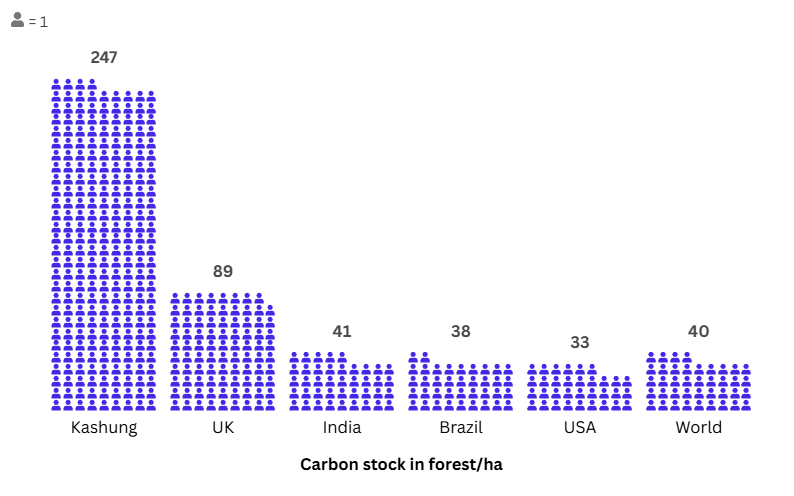Ecological studies and Carbon Stock Assessment of Secondary Forests in Kashung , Kamjong, Manipur Post-Shifting Cultivation
Keywords:
Quadrat study, relative dominance, abundance, IVI, biomass, and Carbon contentAbstract
The study was made to understand the natural ecological healing process through quadrat method, biomass and carbon stock assessment of the forest following allometric equations post shifting cultivation in Kamjong district, Manipur. The study identified 52 species across 32 genera under 24 families. In which, Bambusa spp. (5000/ha) was the most abundant with a significant density of 50.2, contrasting sharply with the least presence of Rhododendron spp., which had only 150 individuals/ha. Relative abundance assessments further confirmed Bambusa spp. as the dominant species within the studied area, with a relative abundance value of 4.577% as oppose to species such as Rhododendron spp. and Pinus kesiya showed considerably lower relative abundances, 0.274 and 0.292, respectively, suggesting their minor contribution to the overall biomass. The study also highlights the uniformity of the Diameter at Breast Height (DBH) sizes due to the young age of the secondary forest. The analysis delineated the ecological roles of various species as reflected in their Importance Value Index (IVI), with key species like Tectona grandis (24.958) and Cinammom tamala (11.50) contributing significantly to the forest structure. Finally, the assessment of biomass and carbon content revealed a total biomass at 1975.3 tonnes/ha and carbon stock estimated at 987.6 tonnes/ha, emphasizing the ecological importance of the forest. Notably, Bambusa spp. contributed the highest carbon stock at 44.71 tonnes/ha, wherein the correlation between carbon content and the total number of individual species was significant, indicating a structured ecological relationship. The findings underscore the richness and ecological intricacies of the forest habitat, marking it as a critical area for conservation and ecological studies.


